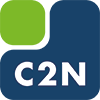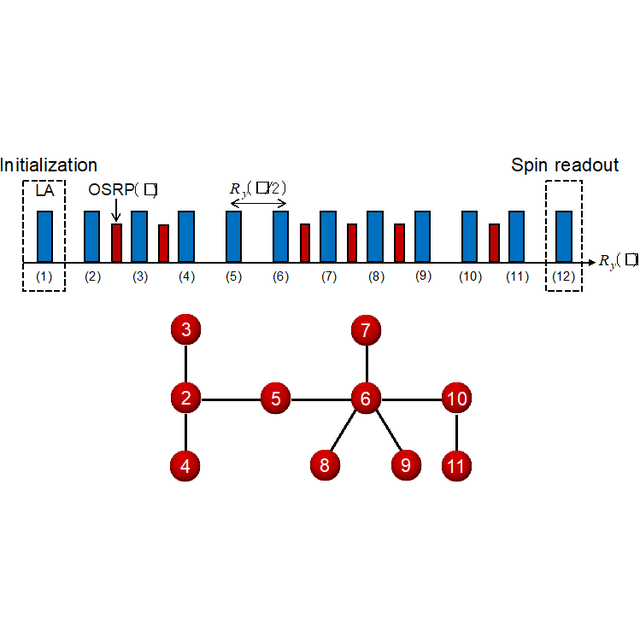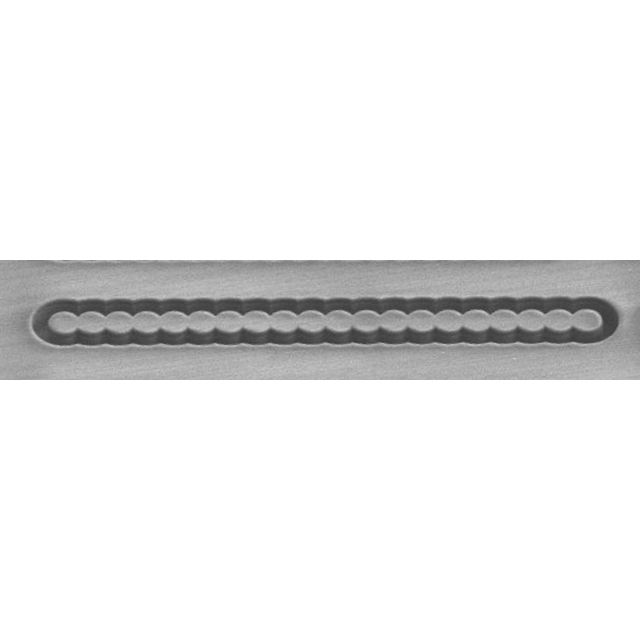A team from the Centre for Nanoscience and Nanotechnology (C2N), in collaboration with the company Quandela through the joint laboratory QDlight, has reached a major milestone in the generation of photonic quantum states. Our results demonstrate a deterministic and reconfigurable method for producing states that are essential for quantum computing.
This form of quantum computing relies on the creation of a network of entangled photons (known as a graph state) on which computations are carried out through local measurements. Until now, generating such states reliably and at scale has posed a significant experimental challenge.
By precisely controlling the spin of a single electron trapped in a quantum dot using optical pulses, we have shown that a single semiconductor quantum dot embedded in an optical cavity can deterministically generate a photonic graph state known as a “caterpillar graph.” This structure is particularly well suited for implementing fault-tolerant quantum computation.
In the long term, this method could serve as a fundamental building block for photonic quantum computer architectures and pave the way for practical applications such as the simulation of complex physical systems and secure quantum communication.
Future research will focus on extending the length of the generated photon chain, implementing error correction protocols, and integrating our system with on-chip photonic circuits to enable scalability.
References
• Huet, H. et al. Deterministic and reconfigurable graph state generation with a single solid-state quantum emitter. Nat Commun 16, 4337 (2025).
• Raussendorf, R. & Briegel,H. J. A one-way quantum computer. Phys. Rev. Lett. 86, 5188 (2001).
• Lindner, N. H. & Rudolph, T. A photonic cluster state machine gun. Phys. Rev. Lett. 103, 113602 (2009).
• Somaschi, N. et al. Near-optimal single-photon sources in the solid state. Nat. Photon. 10, 340 (2016).
• Coste, N. et al. High-rate entanglement between a semiconductor spin and indistinguishable photons. Nat. Photon. 17, 582 (2023).
• Maring, N. et al. A versatile single-photon-based quantum computing platform. Nat. Photon. 18, 603 (2024).
Affiliations
Centre de Nanosciences et de Nanotechnologies, Université Paris-Saclay, Palaiseau, France.
University of Delaware, Newark, USA.
Quandela SAS, Massy, France.
School of Mathematical and Physical Sciences, University of Technology Sydney, Ultimo, Australia.
Figure : Near-future example of all-photonic arbitrary caterpillar graph state generation. Pulse sequence combining excitation pulses (LA) and spin control pulses (OSRP) for the generation of all-photonic arbitrary caterpillar graph state that can be generated with our protocol. Each photon emitted following a R_y(π/2) spin gate will be encoded in a new node of the caterpillar graph state, whereas photons emitted after a OSRP pulse will be redundantly encoded with the previous one, within the same node.
Key words : Quantum optics, solid state physics, entanglement, photonics
Contacts : Helio Huet | Pascale Senellart









